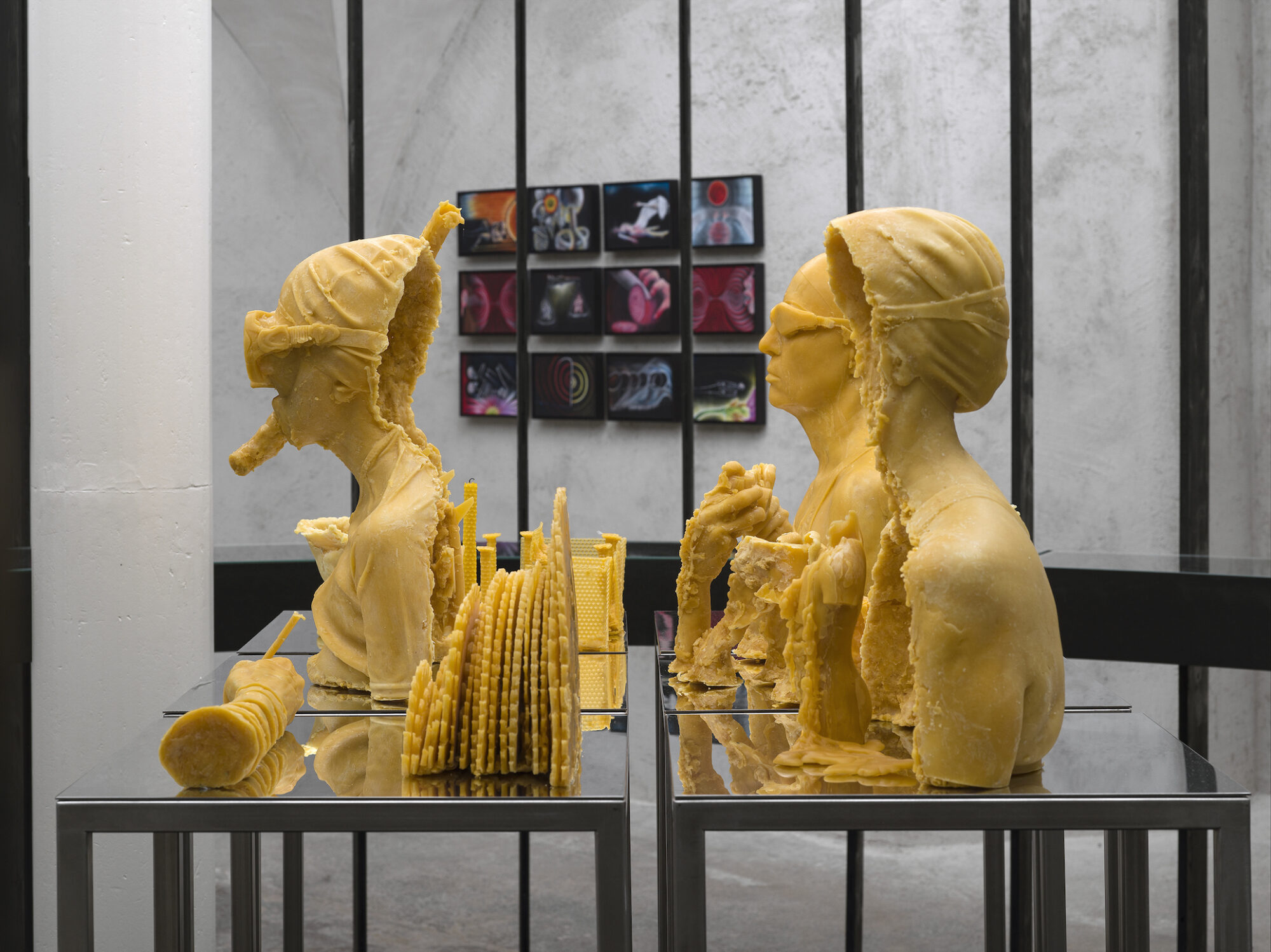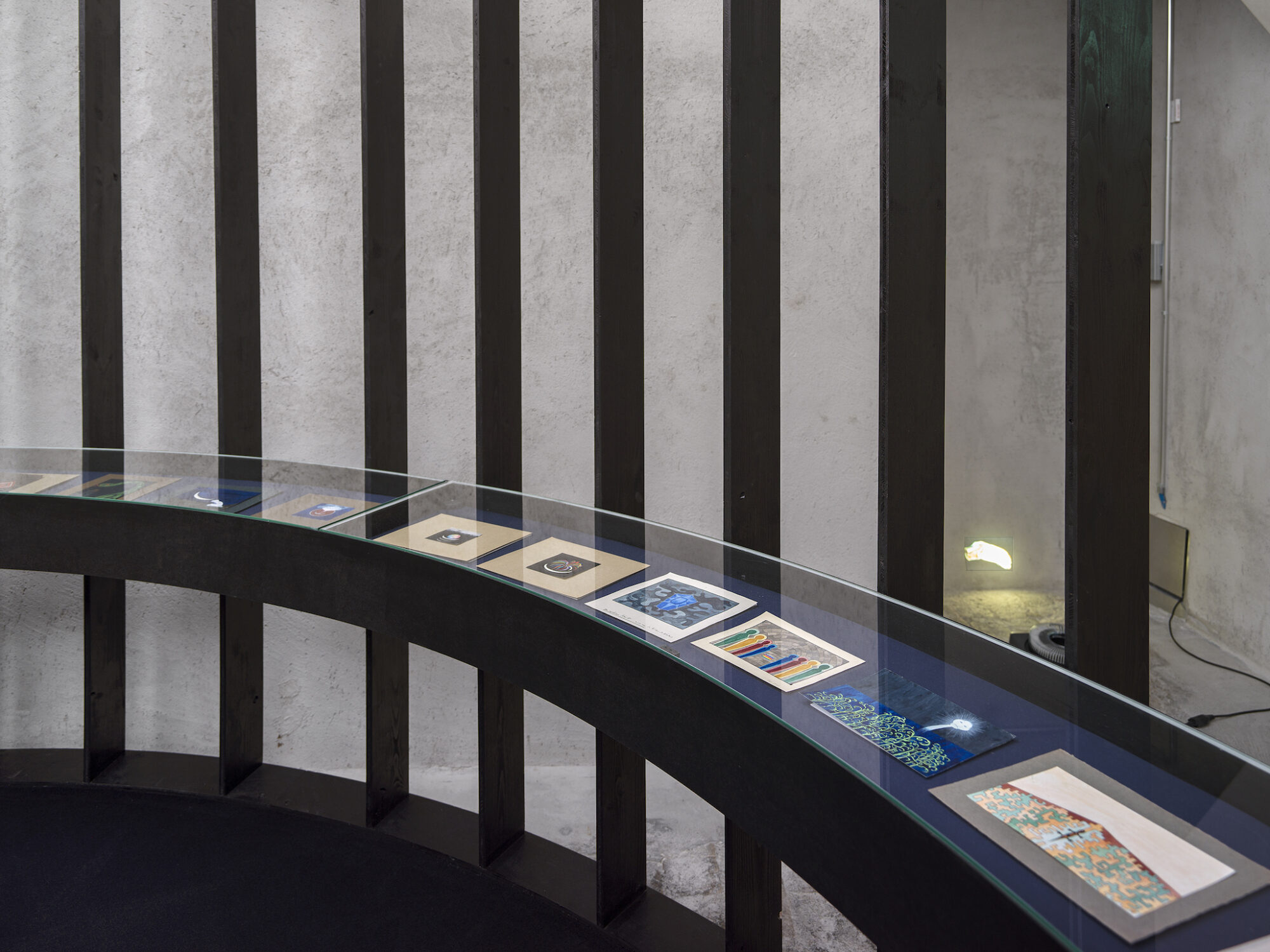Zwischen 1916 und 1919 wurden in Zürich Impulse gesetzt, welche die Künste weltweit nachhaltig prägen sollten. Dada war die Avantgarde-Bewegung, die dazu aufrief, Phänomene und Ereignisse ihrer Gegenwart zu befragen. Mit Dada New York, Berlin, Paris oder Chile werden Namen wie Marcel Duchamp, Hannah Höch, André Breton und Vincente Huidobro verbunden. Auch Punk, die heutige Performance-Kunst oder Techniken wie Collagen, Hacking und Ready-Mades lassen sich im Anschluss an Dada besprechen. Und alles begann an der Spiegelgasse 1 im Zürcher Niederdorf. In der Bier- und Weinschenke Meierei gründeten Emmy Hennings, Hugo Ball, Hans Arp, Sophie Taeuber, Marcel Janco und Tristan Tzara am 5. Februar 1916 das Cabaret Voltaire. Es waren vor allem junge Emigrant*innen, für die das Cabaret Voltaire inmitten des Ersten Weltkriegs Zuflucht bot. Sie setzten dem Wahnsinn der Zeit neue Sprach- und Ausdrucksformen entgegen, experimentierten im Nebeneinander von Literatur, Kunst, Theorie, Tanz und Architektur.
In Zürich steht mit dem Cabaret Voltaire nicht nur der Ursprungsort von Dada, im Kunsthaus Zürich befindet sich auch eine der wichtigsten Dada-Sammlungen. Dieser Pocket Guide verbindet die beiden Häuser und führt Sie zu weiteren Dada-Spielstätten, die das Milieu und die Orte zeigen, in denen Dada entstand und wirkte. Sie erfahren, in welchen Lokalitäten sich die Dadaist*innen zu ihren Soireen trafen, wo Lenin debattierte und C. G. Jung das Unbewusste beschrieb, wo die wildesten Tanzabende stattfanden und woher das Wort «Dada» eigentlich kommt. Dabei überblenden sich Vergangenheit, Gegenwart und Zukunft. Sie erfahren, was war, sehen, was ist, und überlegen, was sein könnte. In diesem Sinne wird Dada auch als aktuelle Praxis verstanden. Dada stellt fortwährend Fragen an die Gegenwart und entwickelt Ideen für die Zukunft.
Der Pocket Guide kann für 7 CHF in Deutsch oder Englisch im Shop des Kunsthaus Zürich oder online in unserem CVBOOKS bezogen werden. Hier finden Sie den Link zu unserem Online-Shop CVBOOKS auf Edcat: https://edcat.net/item/pocket-...
Herausgeberschaft: Salome Hohl, Cabaret Voltaire, Spiegelgasse 1, 8001 Zürich und Cathérine Hug, Kunsthaus Zürich, Heimplatz, 8001 Zürich
Produktion: Salome Hohl, Cabaret Voltaire
Texte: Salome Hohl, Cathérine Hug. Einige Texte wurden übernommen von der Karte Dada Stadt Zürich, 2016, hrsg. von Adrian Notz, Cabaret Voltaire. Texte 2016 von: Nicola Behrens, Adrian Notz, Barbara Ruf, Werner Sieg, Raimund Meyer
Produktion 2016: Nora Hauswirth
Mitarbeit Pocket Guide 2021: Elena D’Amato, Franziska Lentzsch. Herzlichen Dank auch an Raimund Meyer, Elena Grignoli und Petra Winiger Østrup
Gestaltung: Vela Arbutina, Samuel Bänziger
Lektorat: Andreas Rizzi
Druck: J.E. Wolfensberger
(c) 2021 Cabaret Voltaire und Zürcher Kunstgesellschaft / Kunsthaus Zürich
ISBN 978-3-906269-31-3





Between 1916 and 1919, artistic trends were set in motion in Zurich that had a lasting impact on the arts worldwide. Dada was the avant-garde movement that called for questioning phenomena and events of its time. Names such as Marcel Duchamp, Hannah H.ch, Andr. Breton, and Vincente Huidobro are associated with Dada New York, Berlin, Paris, and Chile. Punk, contemporary performance art, and techniques like collages, hacking, and readymades can all also be discussed in the wake of Dada. And it all began at Spiegelgasse No. 1 in Zurich’s Niederdorf. In the Meierei beer and wine tavern, on February 5, 1916, Emmy Hennings, Hugo Ball, Hans Arp, Sophie Taeuber, Marcel Janco, and Tristan Tzara founded Cabaret Voltaire. It was mainly young emigrants for whom Cabaret Voltaire offered refuge in the midst of chaos of the First World War. They countered the madness of the time with new forms of language and expression, and experimented in the juxtaposition of literature, art, theory, dance, and architecture.
Zurich is not only home to the Cabaret Voltaire, the birthplace of Dada, but also to one of the most important Dada collections in the Kunsthaus Zürich. This pocket guide connects the two houses and takes you to other Dada venues, revealing the milieu and places where the Dada movement was born and developed. You will learn where the Dadaists met for their soirées, where Lenin debated and C. G. Jung described the unconscious, where the wildest dance evenings took place, and where the word “Dada” actually comes from. In the process, past, present, and future overlap. You will experience what was, see what is, and consider what could be. In this sense, Dada can also be understood as a contemporary practice, constantly posing questions about the present and inspiring ideas for the future.
The Pocket Guide can be purchased for 7 CHF in German or English in the store of the Kunsthaus Zürich or online in CVBOOKS. Here you will find the link to our online store CVBOOKS on Edcat:
https://edcat.net/item/pocket-...
Editors: Salome Hohl, Cabaret Voltaire, Spiegelgasse 1, 8001 Zurich and Cathérine Hug, Kunsthaus Zurich, Heimplatz, 8001 Zurich
Production: Salome Hohl, Cabaret Voltaire
Texts: Salome Hohl, Cath.rine Hug. Some texts were taken from the map Dada City Zurich, 2016, ed. by Adrian Notz, Cabaret Voltaire. Texts 2016 by: Nicola Behrens, Adrian Notz, Barbara Ruf, Werner Sieg, Raimund Meyer
Production 2016: Nora Hauswirth.
Assistance Pocket Guide 2021: Elena D’Amato, Franziska Lentzsch. Many thanks also to Raimund Meyer, Elena Grignoli and Petra Winiger Østrup
Design: Vela Arbutina, Samuel Bänziger
Proofreading: Sarah Quigley
Printing: J. E. Wolfensberger
(c) 2021 Cabaret Voltaire and Zürcher Kunstgesellschaft / Kunsthaus Zürich
ISBN 978-3-906269-32-0






